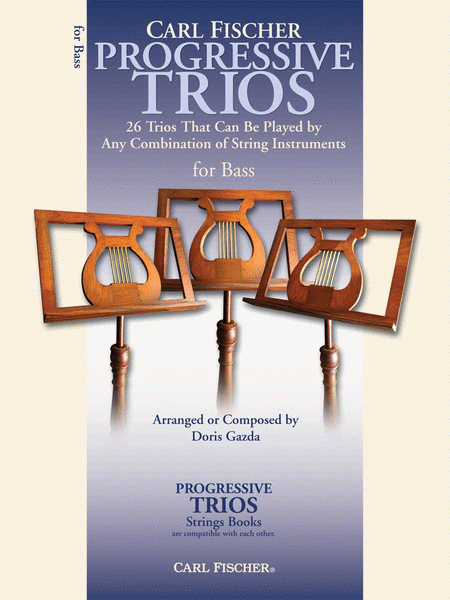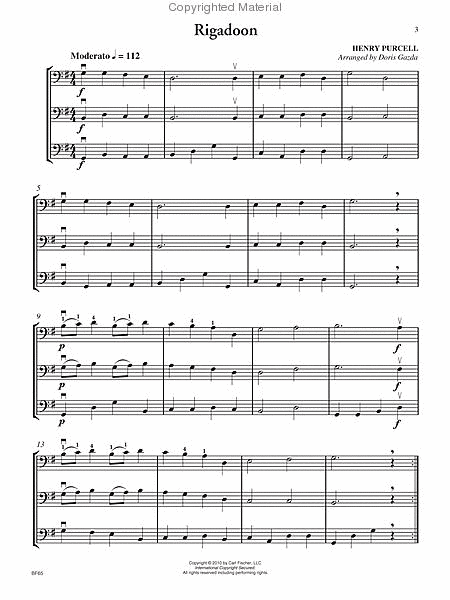Progressive Trios for Strings
26 Trios
-
Ships in 1 to 2 weeks
Details
Description
SKU: CF.BF65
26 Trios. Composed by American Folk, Andre Campra, Doris Gazda, English Folk, French carol, George Elvey, German Carol, German Folk, Giovanni Battista Pergolesi, Giuseppe Giordani, Henry Purcell, J. Spilman, Mexican Folk Song, Scottish Folk Song, Wolfgang Amadeus Mozart, and etc. Arranged by Doris Gazda. Sws. Back To School. Collection. With Standard notation. 48 pages. Carl Fischer Music #BF65. Published by Carl Fischer Music (CF.BF65).ISBN 9780825883040. UPC: 798408083045. 9 x 12 inches.
Chamber music is an essential part of learning to play an instrument. Theseversatile trios are written so that they can be performed by any combinationof three string instruments. These arrangements and compositions byprominent string pedagogue Doris Gazda will sound full and satisfying withonly three players all the way up to a full string orchestra. The selectionof music in this collection covers a wide variety of musical styles that willprovide hours of enjoyment and performance options. There is even anarrangement of the “Bridal Chorus” from the opera Lohengrin, shouldyou have the opportunity to play at a wedding! The trios are progressivelyorganized by level of difficulty as the performers advance in their skills. Awelcome addition to the repertoire for all string players.
During the seventeenth and eighteenth centuries, music lovers gathered in theirhomes in the evenings to make music. The music they played was typicallycalled “chamber music.” Sometimes they formed a small orchestra but amongthe favorite styles of music they played were the “trio sonatas.”Trio sonatas were written for two solo melodic instruments such as two violinsor two wind instruments and a basso continuo. The basso continuo providedboth the bass line of the piece and the indication of the chord structure for eachof the bass line notes. Usually the bass line was played by a cello or a bass viol.The chords were played by a harpsichord, lute, organ or harp.Because our “inner ear” tends to fill in the implied harmonies that wouldbe realized (performed) by these instruments, it was possible to play the triosonatas with just two melodic instruments and the instrument playing the bassline notes.In the eighteenth century the classical symphony as a genre became verypopular. The third movement of the symphony was usually a “minuet andtrio.” The minuet was played by the entire orchestra followed immediately bythe “trio section” which was played by two violins and a cello.Over the years this structure evolved into the form of music that is composedor arranged for three instruments. Many composers have written music forthree instruments. Sometimes these compositions are a mixture of string, windand keyboard instruments. To learn more about the literature for instrumentaltrios, on your computer, you can look up “trio” plus the name of a “composer”and you will find many great compositions. Recordings of these trios would bewonderful additions to your iPod.This collection of Progressive Trios for Strings brings together new arrangementsof favorite pieces from the classical repertoire along with one newly composedpiece. The Progressive Trios are published for violin, viola, cello and bass and arearranged so that they can be performed by any combination of three of theseinstruments. The placement of pieces in the books is determined by order ofdifficulty.It was a pleasure to compile and arrange this collection. I hope that it willprovide you with literature that will be enjoyable to work on and perform withyour friends and that it will add a new dimension to your musical repertoire.


 Share
Share